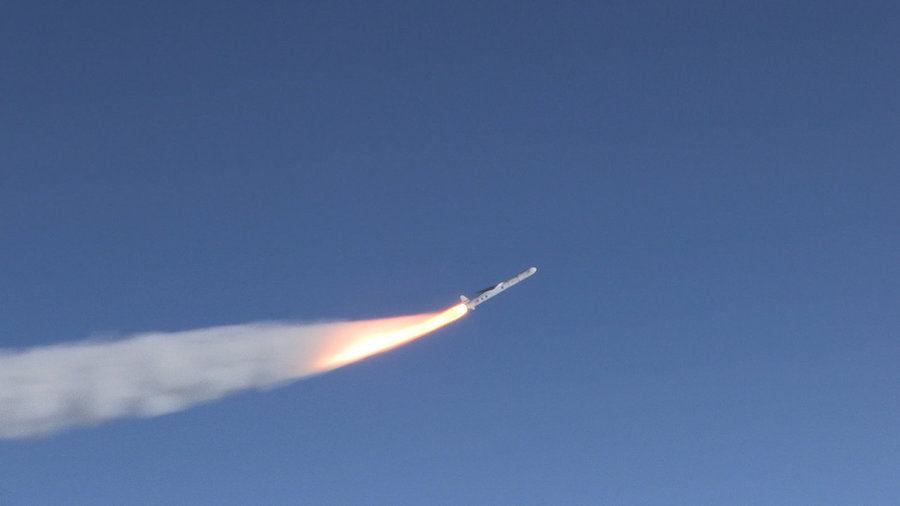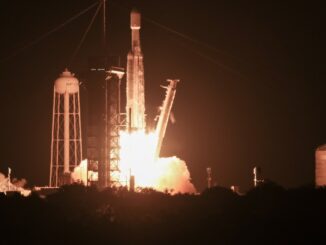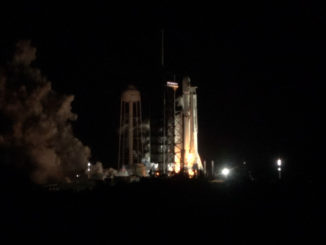
The launch of a NASA satellite to study the behavior of plasma in Earth’s ionosphere has been delayed to early next year, giving engineers time to resolve concerns with the separation system on its air-launched Pegasus XL booster.
NASA’s Ionospheric Connection Explorer was set for launch Dec. 8, but the mission is not expected to take off until at least early 2018 after managers ordered a delay, NASA announced Nov. 3.
Known by the acronym ICON, the mission will ride an Orbital ATK Pegasus XL launcher into orbit after dropping from the belly of an L-1011 carrier jet over the Pacific Ocean near the Reagan Test Site on Kwajalein Atoll in the Marshall Islands.
NASA decided to suspend launch preparations last week to give engineers more time to to assess a separation component on the Pegasus XL rocket, the space agency said in an update posted on its website.
The ICON spacecraft itself is healthy and ready for final pre-launch processing, according to Elsayed Talaat, chief scientists of NASA’s heliophysics division. The satellite, also built by Orbital ATK, was placed in its shipping container at the contractor’s Gilbert, Arizona, assembly facility last month to await clearance to head to Vandenberg, he said.
But Talaat said last month that ICON’s shipment to Vandenberg Air Force Base in California for attachment with the Pegasus rocket was delayed “pending resolution of concerns about the launch vehicle bolt cutter assembly reliability.”
Talaat told a scientific advisory committee that ICON’s launch could be postponed to resolve the issue, a decision NASA confirmed last week.
The suspect component is used in systems to jettison the Pegasus XL’s payload shroud during its climb into space and separate the ICON spacecraft once in orbit.

The three-stage, solid-fueled Pegasus XL rocket is partially assembled in Orbital ATK’s preparation building at Vandenberg. Once ICON arrives, ground crews will attach the satellite to the forward end of the Pegasus rocket, then encapsulate it inside the vehicle’s clamshell-like payload fairing, which protects the spacecraft during final pre-flight activities and the initial ascent into space.
Technicians will then transfer the Pegasus to the ramp at Vandenberg’s airfield to meet its L-1011 jumbo jet mothership. The carrier plane will ferry the Pegasus rocket across the Pacific Ocean to Kwajalein around a week before launch.
Fitted with a delta wing and steering fins, variants of the Pegasus rocket have flown 43 times on spacecraft delivery missions into Earth orbit, accomplishing 29 consecutive successful satellite launches.
Thomas Immel, ICON’s principal investigator at the University of California, Berkeley, said engineers are scrutinizing a part in the rocket’s separation systems, which are the same systems used on the Pegasus XL’s last launch in December 2016, when the air-dropped booster successfully placed eight hurricane research satellites in orbit for NASA.
NASA planned to launch the ICON mission in June, but engineers wanted more time to inspect Pegasus rocket motors after they were mishandled during shipment to Vandenberg, NASA and ICON officials said. That pushed the launch back to December, the next availability in the military-run range at Kwajalein.
The ICON launch is currently the only mission with a firm assignment to a future Pegasus flight, but the winged booster is a candidate to launch a NASA X-ray astronomy satellite named IXPE in 2020. The space agency has not formally selected a launch provider for that mission.

Developed on a budget of approximately $200 million, ICON will observe an upper layer of Earth’s atmosphere called the ionosphere, where influences from terrestrial weather patterns meet the space environment. From a 357-mile-high (575-kilometer) orbit, scientific instruments on the 619-pound (281-kilogram) spacecraft will measure temperatures and winds high up in the atmosphere, and changes in the motion and density of ionized gas over time.
Scientists believe the behavior of neutral and charged particles in the ionosphere, located around 50 miles (80 kilometers) above Earth’s surface, changes with the seasons, solar activity and space weather, and from day to night.
Research suggests radiation from the sun is not entirely responsible for variations in the ionosphere. ICON will investigate the drivers of changes in the ionosphere, including those from deeper in the atmosphere closer to Earth’s surface.
Changes in the ionosphere can distort radio communications and GPS navigation signals, and scientists say a better understanding of how plasma propagates through the ionosphere could help predict communications and navigation outages in the future.
Email the author.
Follow Stephen Clark on Twitter: @StephenClark1.



